In Russia, it was revealed that the fauna of Siberia is becoming more southern due to climate change. Global warming will allow tropical species from the Atlantic to colonize the Mediterranean Sea. Global warming is making some species of marine animals more susceptible to the spread of diseases such as avian influenza due to the animals congregating in breeding and feeding areas or changing migration patterns. Some researchers are concerned that current rates of warming could make oceans as warm and acidic as they were during the end of the Permian extinction, 250 million years ago, when up to 90 percent of marine species died out.
Mediterranean Sea
Global warming will allow tropical species from the Atlantic to colonize the Mediterranean Sea. A new study documents large-scale changes to the ocean system that threaten the stability of marine ecosystems in the sea between Europe, Africa and the Middle East. If global warming continues at its current rate, tropical species could take over parts of Mediterranean marine ecosystems by the end of the century, a new study warns.
The study analyzed a detailed fossil record showing how tropical shellfish replaced then-existing Mediterranean populations starting around 135,000 years ago, revealing a dramatic climate-driven and systemic reorganization of biodiversity. During this interglacial warm phase, Earth’s temperature reached the lower end of the range expected by 2100 under a moderate warming scenario, said lead study author Paolo Albano, a senior scientist at the National Institute of Marine Biology, Ecology and Biotechnology in Naples, Italy.
Albano said that when the researchers matched their fossil record with climate data in the model, it showed that the level of warming would likely destroy the cold-water barrier along Africa’s northwest coast that blocks nearly all tropical species from accessing the ocean—the Mediterranean Sea through the Gibraltar Sea. The strait is eight miles (almost 13 kilometers) wide.
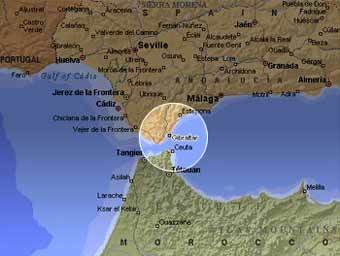
“There is a very large upwelling system with deep, cold water coming out,” Albano said. “This prevents the arrival of purely tropical species from West Africa. And the question was how long can this barrier last and what will happen as warming increases? When will this area become warm enough to allow tropical species to enter the Mediterranean Sea?”
The fossil record shows that iconic tropical species such as cuspid shells and great conch shells lived in the Mediterranean during that geologically relatively recent warm era, similar to the current climate. “This family of gastropods is very famous among paleontologists,” he said. “It does indicate tropical conditions that existed at the time and may return.” A related species from the Pacific, the Persian conch, has already spread to the eastern Mediterranean via the Suez Canal, he added.
He said the new study’s findings “intriguingly” suggested that the influx of new species could increase biodiversity and functional richness of ecosystems, but only up to a point. Uncontrolled warming after 2100 will destroy most ocean ecosystems. In a global context, it’s important to remember that the equatorial oceans will lose species as they warm further, he said.
A 2022 research paper documented mass mortalities of marine life in the Mediterranean Sea for five consecutive years between 2015 and 2019. Its authors concluded that the sea is “experiencing accelerating environmental impacts [from marine heatwaves] that pose an unprecedented threat to its ecosystems,” the journal Health and Function reports.
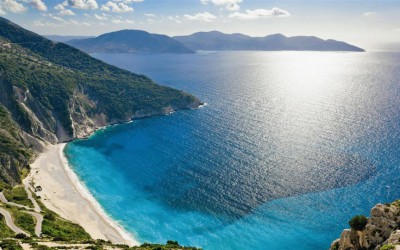
In 2023, another research team examined regional seabird mass mortality associated with ocean heat waves, noting “more frequent large-scale mortality events and the possibility of new declines in seabird carrying capacity in the northeast Pacific.”
There are also studies showing that global warming is making some species of marine animals more susceptible to the spread of diseases such as avian flu due to the animals congregating in breeding and feeding areas or changing migration patterns. Bird flu was recently reported for the first time in chinstrap penguin populations and has also caused the death of marine mammals along the Pacific coast of South America.
Extreme growth of seaweed and jellyfish, as well as mass mortality, such as starfish starvation on the Pacific coast of North America, are also linked to global warming. Some researchers connecting the dots are concerned that current rates of warming could make oceans as warm, acidic and oxygenated as they were during the end of the Permian extinction, 250 million years ago, when up to 90 percent of marine species went extinct.
A large-scale biological shift is already underway in the 2,400-mile (almost 4,000-kilometer) far eastern Mediterranean Sea, especially along the shallow coastal shelf near Israel, one of the sea regions that is warming the most and fastest. Tropical Pacific species have colonized this part of the Mediterranean since the construction of the Suez Canal, swimming and hitchhiking along the 120-mile waterway.
At least 1,000 species migrated to the Mediterranean this way, including several species of Pacific shrimp, which are now a valuable fishery for Egypt but have displaced native species that were an important fishery for Israel. The new species also brought potentially dangerous parasites with it from the Pacific Ocean. Albano said his first research trip to the region was to study migration through the Suez Canal.
“When I first put my feet in the water, I realized that the Israeli Mediterranean is no longer the Mediterranean,” he said. “Not so much because of the presence of these Red Sea species, which was expected. Because there are almost no native species left. Wow.” He later realized that this was mainly the result of global warming.
Siberia
In Russia, it was revealed that the fauna of Siberia is becoming more southern due to climate change. The distribution and number of the red-cheeked ground squirrel has decreased significantly, and the range of the forest-steppe marmot is expanding, the press service of Tomsk State University reported. Southern species of plants and animals are increasingly expanding their habitat to the north – to Siberia, which is associated with both global climate change and human actions, scientists from Tomsk State University (TSU) found out during the study. This was reported to TASS by the university press service.
“The main causes of changes, directly or indirectly, are global climate change and anthropogenic factors: regulation of water systems as a result of hydraulic construction, transfer of fish species from their natural habitat to other water bodies through intentional introduction or accidental introduction. All this entails a wide range of consequences: a decrease in the quality of the aquatic environment, changes in biodiversity, the penetration of alien species, changes in the structure both within the population and in the fauna as a whole, including the suppression of fish resources and some valuable fish species,” the statement said. .
Having assessed the impact of climate change on the biodiversity of introduced plants, scientists have identified a tendency towards warmer weather during the cold period of the year, an increase in the duration of frost-free and growing seasons due to the earlier onset of phenological spring, which contributes to an increase in the biodiversity of perennials due to the emerging possibility of growing non-regional plants from various floristic areas of the globe that were previously considered unsuitable for regional cultivation, as well as late-flowering perennials.

Over the past 20 years, the collection funds of open-ground ornamental herbaceous perennials of SibBS TSU have increased from 560 to 2000 species and varieties. Due to the threat of invasion of alien aggressive species in a changing climate, collection funds should be monitored. The trend towards replacing northern species with southern ones, according to TSU biologists, will continue. However, with all the changes within species and populations as a whole, the ecosystem demonstrates stability and will remain stable, provided that people do not increase their pressure on the environment. In 2024, scientists plan to develop strategies for the conservation and use of biodiversity in the ecosystems of Northern Eurasia.
USA
Global warming forces not only land animals to change their migration routes, but also sea animals. Warming oceans are pushing tiger sharks further north and out of protected areas. Also, changing their route can not only disrupt local ecosystems, but also increase the number of encounters between sharks and humans. An assessment of the situation over the past 40 years was carried out by the School of Marine and Atmospheric Sciences at the University of Miami. The research results are presented in the journal Global Change Biology, reports AB-NEWS.
Tiger sharks are large predators, reaching 5–6 meters in length, and live in tropical and subtropical latitudes. During the cold months they stay closer to the equator, and the rest of the time they migrate along warm currents. Historically, the waters off the northeast coast of the United States have been too cold for them, but in recent years tiger sharks have become frequent visitors. The reason is a change in ocean water temperature.
The researchers discovered these climate changes by analyzing 9 years of satellite-tagged tiger shark tracking data combined with nearly 40 years of conventional tags and recapture information provided by the National Oceanic and Atmospheric Administration (NOAA). By comparing the information obtained with satellite data on ocean surface temperatures, scientists saw how much warming has expanded the range of tiger sharks towards the North Pole. An increase in water temperature just 1° above average causes tiger sharks to swim 400 km closer to the pole than usual. Warming has also affected the timing of migrations: now sharks arrive on the northeastern coast of the United States on average 14 days earlier than 9 years ago.
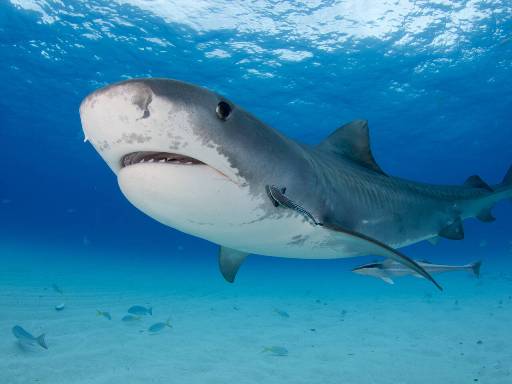
The results of the study are critical for the conservation of this species, as their new routes lie outside protected areas, making them vulnerable to commercial fishing. In addition, changes in migration could have huge consequences for the ecosystem: after all, tiger sharks are apex predators, occupying the top of food chains. Their movements can disrupt established interactions between marine animals. In addition, tiger sharks will now increasingly encounter people.
Antarctica
The struggle for survival has led to the fact that most animals cope well with life’s trials and changing climatic conditions. But among them there are completely unique ones that can exist in extreme environments. For example, white-blooded whales inhabit the cold waters of Antarctica, where the temperature does not exceed −2°… +2°. Note that the colder the water, the more oxygen is dissolved in it. It is believed that all the oxygen necessary for life comes from the water through the gills and skin directly into the blood; It is likely that in order to better saturate the blood with O2, white-blooded fish got rid of their scales, reports the journal Current Biology.
Ichthyologists, studying the living conditions of this species, learned how they care for their offspring. The parents make a nest of small stones on the seabed or dig a hole in the bottom soil into which they lay their eggs, after which they guard it until the fry are born. Such buildings are usually located singly or in small clusters. However, in 2021, an expedition from the Alfred Wegener Institute for Polar and Marine Research discovered a unique “maternity hospital.”
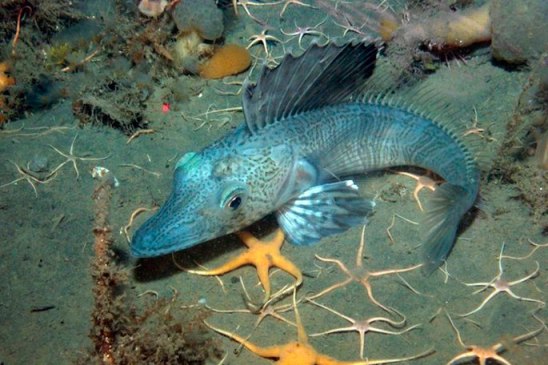
While exploring the bottom of the Weddell Sea off the coast of West Antarctica using an underwater camera mounted on a special frame, ichthyologists noticed a large number of nests of white blood whales. After developing the images, it was possible to count more than 16,000 nests located at a depth of 400 – 540 meters. About 12,000 of them contained eggs, each nest containing over 1,700 eggs. The “maternity hospital” was guarded by adult fish. Why white blood whales decided to gather in such numbers is not entirely clear. This may be due to the water temperature, which, thanks to the upward flow, reaches −1°…0° here. Outside the colony, the temperature drops to −2°. In addition, the researchers noted that in this area there is an increased concentration of food, which is so necessary for the fry after hatching.
According to scientists, in total the colony consists of 60 million nests and occupies 240 square meters. km. (this area approximately corresponds to Tyumen). Thus, the colony of white blood whales in the Weddell Sea is the largest spawning ground for fish in the World Ocean. It plays an important role in maintaining local ecosystems, providing food for numerous inhabitants, from bacteria to seals. Researchers hope that the colony will become a protected area, which will protect it from the negative consequences of human activity.
Arctic
Scientists from the Siberian Federal University (SFU) studied how wild reindeer adapt to sudden climate change in the Arctic. Observations have shown that their habitat is shifting from the tundra to the forests of Evenkia, the timing of migration and behavior have changed significantly. The data obtained will help specialists understand how to preserve and carefully use the unique biological resource of the Russian North, reports the RIA Novosti information service.
According to forecasts, by 2030 the Arctic Ocean could be completely ice-free in the summer. According to experts, over the past half century the Arctic has been warming 2 times faster than the rest of the world. The Taimyr Peninsula is heating up the fastest. Such global changes have a serious impact on the entire ecosystem of these territories. To preserve biological diversity and prevent the extinction of unique species, experts conduct large-scale research in this region. Wild reindeer are a key link in the entire Arctic ecosystem. Climate change is having a serious impact on these animals. According to experts, over the last quarter century, the number of reindeer in the Taimyr-Evenki (Taimyr) population has decreased from 900 to 320 thousand. Systematic observations of the movements of reindeer throughout the year using GPS sensors have made it possible to identify seasonal and other features of their behavior.
It was found that if in the 60s of the twentieth century in the summer up to 90% of deer lived in Western Taimyr, now most of them have moved to the central and eastern parts of the peninsula. The timing of migration has also changed dramatically. The total length of stay of deer in their “parental home” has decreased from 7–8 months to 60–65 days. Even the expression “deer are leaving Taimyr” appeared. According to scientists, in order to study the state of the wild deer population in as much detail as possible, they used all available methods, including molecular genetic, chemical and biochemical laboratory studies. According to experts, preserving the population of these unique animals in the northern regions of the Krasnoyarsk Territory and the Republic of Sakha (Yakutia) makes it possible not only to preserve the Arctic nature, but also serves as an important biological resource for humans.
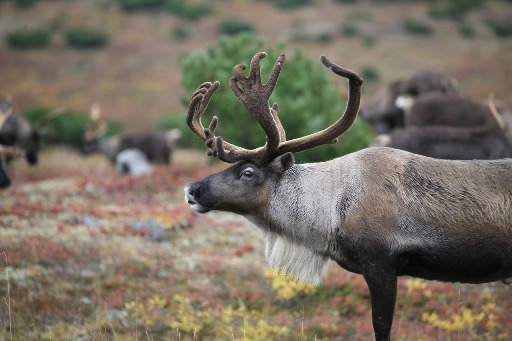
With an increase in temperature and, as a consequence, an increase in the productivity of reindeer pastures, their departure from Taimyr looks paradoxical. Nevertheless, biochemical studies carried out at Siberian Federal University confirm the process of adaptation of deer to new living conditions in the forests of Evenkia, the researchers reported.
Wild reindeer of Taimyr and Evenkia are the object of hunting, including by indigenous peoples of Siberia. Thanks to the work carried out by Siberian Federal University biologists, new hunting dates have been established. Now, on the territory of Taimyr, hunting opens not from August 1, but from the 15th, that is, after the bulk of the females and young of the year have crossed the main water barrier – the Kheta and Khatanga rivers. Changes to hunting rules are already bearing fruit. Stabilization of the number of wild reindeer at a new level was noted. The data obtained were also used to determine the limit (volume of production for a constituent entity of the Russian Federation) and quotas (distribution of production between designated hunting grounds).
The work by SFU specialists was carried out as part of a project to assess the sustainability of Arctic ecosystems based on a study of the dynamics of the state of key species (polar bear, walrus, ivory gull, wild reindeer) commissioned by PJSC NK Rosneft.
Cases of polar bears coming out to people have become more frequent. The Bear Patrol project has officially launched in Russia, which will cover five Arctic regions. These are Yamal and Yakutia, Chukotka, Arkhangelsk region and Krasnoyarsk region. Project volunteers will carry out extensive educational work for people in the polar bear’s habitat – local residents, shift workers and tourists.
Recently, cases of Red Book predators entering populated areas have become more frequent. The new program will reduce risks in conflict situations between humans and animals. Experts will tell you how to behave correctly when meeting a polar bear and provide all the necessary instructions and contacts. The activities of the Bear Patrol are also aimed at leaving wild animals in their natural habitat. After all, many people try to feed bears, especially small cubs. Thus, tying them to humans and depriving them of the opportunity to adapt to the wild.
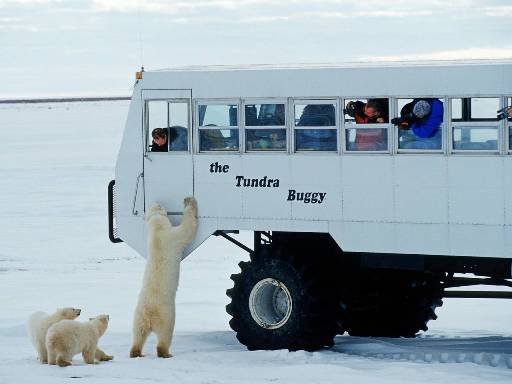
– We must train you and tell you that you should not approach the bear or try to feed it. A special request to shift workers: when you feed a little bear, which for some reason is left alone, it’s all funny and cute, but then it loses the ability to hunt and no longer leaves people. And then he becomes a big, formidable beast, no matter how much we feed him,” explains Rosprirodnadzor.
The first event has already taken place in one of the schools in Salekhard. In the near future, special seminars will be prepared for employees of enterprises, and webinars for tourists and shift workers. In addition, training centers will be created for the local population. In rotational cities and border villages, groups of activists are organized, who will be trained and equipped with various tools to scare away the beast.
Invasive alien species introduced by humans
Invasive alien species pose a serious global threat to nature, the economy, food security and human health. This is alarmingly reported in a scientific report by the UN Intergovernmental Science-Policy Platform on Biodiversity and Ecosystem Services (IPBES). The report was compiled by 86 experts from 49 countries. Along with dramatic changes in biodiversity and ecosystems associated with climate change, alien species impose global economic costs. So, in 2019 they already exceeded $423 billion; with costs increasing at least 4 times every decade since 1970.
Over the past few centuries, humans have intentionally and unintentionally introduced more than 37,000 species to places outside their natural range. More than 3,500 of them are considered invasive because they threaten native species with extinction; Today, “aliens” have become the main cause of 60% of recorded extinctions of plants and animals. Experts emphasize that not all alien species become invasive: only about 6% of alien plants, 22% of alien invertebrates and 14% of vertebrates. It is known that 11% of foreign microbes are invasive and pose a serious danger to nature and people. More than 2,300 invasive species have been found on lands managed by Indigenous peoples, threatening their quality of life and cultural identity.
Nearly 80% of the documented impacts of invasive species on nature’s contribution to human life are negative, particularly through damage to food supplies, the IPBES report notes. For example, the impact of the European shore crab (Carcinus maenas) on commercial shellfish beds in New England (USA). 85% of impacts negatively impact people’s quality of life, for example through health consequences, including diseases such as malaria, Zika virus and West Nile virus spread by invasive mosquitoes.
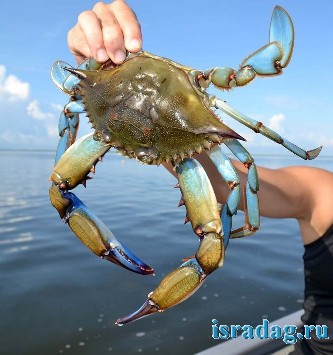
The report said that 34% of the effects of biological invasions were recorded in the Americas, 31% in Europe and Central Asia, 25% in the Asia-Pacific region and about 7% in Africa. The greatest negative impact is observed on land (about 75%), especially in forests, woodlands and cultivated areas; significantly less impact in freshwater and marine habitats, reports the Institute of Ecology and Evolution A.N. Severtsov RAS.
IPBES points to insufficient measures to solve these problems, according to the official website. While 80% of countries have targets related to the management of alien species in their national biodiversity plans, only 17% of countries have national laws or regulations specifically addressing these issues. 45% of countries do not invest at all in pest control.




